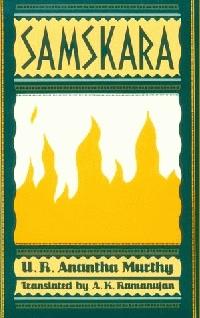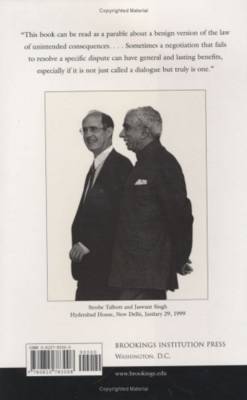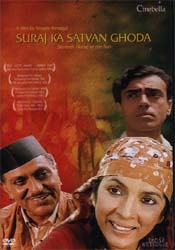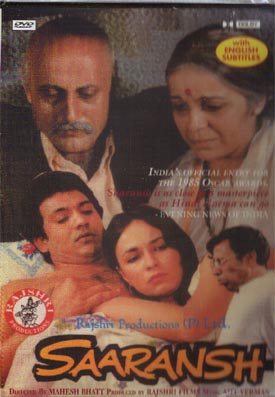Friday, October 14, 2005
Samskara

I read V.S.Naipaul's "India - A Wounded civilization" and since then i have been in a limbo on how to write a review to that book.The reason is the thought that my review should do some justification to an awesome book like that.Then i decided to put it away for a while and write the review, some other time.Before i could get out of the wounded civilization thoughts, i read samskara.And this one again placed me at the same position.It is again another book that is hard to write a review, for it is not a run of a mill book, it is a literary achievement that has been analyzed and scrutinized by many.I didn't want to add this one also in my list of, "too be reviewed books".So i wrote my stupid 2 lines on this Book.I wrote the above lines to let u all know that the book is a lot lot more than what i am going to write.
----story----
This controversial novel by padma bhushan, jnanpith Dr.U.R.Ananthamurthy is a landmark book in the indian literary history.It tells the story of a decaying brahmin colony. The colony in question is the agrahara of durvasapura ,where around 20 madhava brahmin families live.The problem starts on the question of who has to perform the last rites(samskara) of Naranappa, a fellow brahmin, who took to un brahminical ways of drinking, eating meat and womanizing. The acharya of the colony is made to decide on that.what follows is a closer look into the aghrahara and its hypocratic brahmins.The novel later moves on from the problem of the samskara(last rite) of a dead man to the samskara(transformation) of the acharya.
------------
The book is divided into 3 parts.The first part leads to a sin being committed by the acharya.The problem that the agrahara faces at the start is a great imagination by the author and he plays with various characters to bring forth the various bad things of the community.
In the second part it is about the sin and immediate aftermath.The book changes from a general one which was addressing the community as a whole to something that talks more about the acharya.
In the third part it is all personal.It is all about the acharya, and his attempts to get redemption for his sin.The acharya, who is on a quest to find answers for his personal questions, comes across a low caste man names putta, who accompanies the acharya to his destination. This character becomes an important one in changing the views of the acharya and provides him with answers for various questions.
This is a short book, around 140 pages.On a first look it might look like yet another brahmin bashing book. At least that is what i thought.Even though it is partly true, this book is lot more than that.
What is great about the book?.The book works on multiple levels.It tells an interesting story, a social commentary, does good characterization and all the other things of a good novel. But that is just one dimension of it. The book is also philosophical, it asks a lot of questions like how to lead a right life, the validity of the customs , who is brahmin? etc. Also the book is filled with allegories and points to mythological stories, for examples. Above all the book gives space for you to imagine, analyze and conclude things for yourself. The book is open ended and there are so many events and characters which provide us with so many pointers for imaginations and conclusions.There is hardly a character or a line which does not convey an idea.This is a complete book, rich with various literary components.
For example, in the 3rd part where the acharya is going through a transformation(The first 2 parts are less philosophical compared to the third where the acharya goes through the transformation).The confused and pensive acharya walks out of the agrahara and wanders aimlessly through a forest. There he meets a villager named putta on the way. Putta who walks with the acharya for company, compulsively sticks to him and takes him to a festival fair. Putta lives in the moment, he enjoys the various small amusements available in the fair. He goes to see a half snake-half women show, bets and wins in a cock fight, eats dosa from a local restaurant, buys ribbon for his wife and donates money to a beggar. And when putta is doing all these things the acharya is thinking about his sin and how it could be corrected.
For a normal reader the behavior of putta might sound something that is mundane and a usual habit of any villager. But when we think about what the acharya said at the start of the third part
"yoga is the stilling of waves of mind....May one's life be like that of a sunshine. A mere awareness, a sheer astonishment, still floating still and self-content, like the sacred brahmani-kite in the sky.Legs walk, eyes see, ears hear.O to be without desire. Then one's life becomes receptive. Or else in desire it dries to a shell, it withers, becomes a set of multiplication tables learned by rote.That kanake, illiterate saint-his mind was just one awarness, one wonder,that's why he came to his master and asked:'You want me to eat the plantain where there's no one.Where can i go,where can i do that?.God is everywhere,what shall i do?.God has become to me a set of tables, learned by rote. Not an awareness, a wonder as he was to Kanaka-so no more god for me."You realize that Dr Anantha murthy uses the normal festival setup to drive his point.The acharya does not participate in any of the things that putta did.The acharya thinks that it is a sin to watch a show or participate in a cock fight.So he stays away while putta enjoys himself.Putta talks about how he fights with his wife and later buys a ribbon for her.He bargains with a goldsmith for the acharya, he asks the acharya to eat with the brahmins while he waits outside and donates alms to the cripple beggars. when all these things where happening the acharya was just WATCHING ,putta lives in the moment and by all his acts at the fair he becomes a complete human being. Whereas in the kaleidoscopic picture of the festival fair the acharya is a viewer, who stands outside the action and watches time pass by. It is the same in the life also, he is a viewer but the kaleidoscope is just bigger. When the acharya is accumulating good karma for a better life after his death, putta cherishes the god given life and lives when he is alive.
On another level if you compare these two characters of Acharya and putta and there experience at the fair.It is an interesting contrast study. The acharya is an Upper class Brahmin, where as putta is a lower class mahler. The acharya is an intellectual, who is called the 'crest jewel of vedantha', where as putta is a pimp. The agrahara is supposed to be pure and residing place of all good things(Heaven) where as the fair is the residing place of all sins(Hell).The acharya who comes out of his agrahara after crossing a forest lands in the fair.In the forest, the buffer between good and bad he meets Putta, who takes the acharya on a sensual tour, a feast to the various senses to make him realise what he is missing in life.
Again this crossing of forest by the acharya could be viewed in the context of the different stages of a hindu human life. BRAHMACHARYA, GRIHASTHYA(married life), VANAPRASTHA(retirement into forest), SANYASA(Renunciation of pleasures).Here the physical crossing of forest can be viewed as the vanaprastha stage of a human being. And when you look at from that point. You can know that the acharya is mixing the various stages of a human being.
This is just one small part that i wanted to talk.The whole book is like that, this small 140 page book expands into a much much bigger one as you start analysing it.The book starts its multiple meaning for every thing that is conveyed in the book right from its title samskara.
The book is simply fascinating with its characters. Narannappa, putta, acharya and many more characters from the agrahara are beautifully sketched. The book brings forth the characters and incidents so vividly. Also this is a book that reach's the western reader as a indian regional book and not as those books that are written with western audience in mind.It evokes anger and hate against the practices of the upper caste people of that agrahara.
This book is kind of similar to Herman hesse's "Narcissus and Goldmund"

The Acharya who wants to acheive god by the scriptures and naranappa who wants to acheive god by loving the life given by him can be related to narsissus and goldmund.The book is philosophical at times and puts lot of deep questions, without providing any answers.
The book was written in 1965 and made into a movie by girish karnad later.This book is still a powerful one which talks a dig at the brahminical attitudes.I can imagine the amount of protest he would have got in 1965 when it was released in kannada.
The translation of the book should be mentioned.Excellent translation by A.K.Ramanujam.It is a multilayered deep one and an excellent character study.
 Dr U.R.Anantha Murthy
Dr U.R.Anantha MurthyLinks:
Dr.UR Ananthamurthy Bio
Dr.UR Ananthamurthy's interview in outlook
Ananthamurthy on the best indian writers of the century
Dr.Ananthamurthy against BJP
Comments:
<< Home
nice one sen
I wanted to read this one
esp the Naipals one.
The other reminds of incident that happened in life of Adi Shankara
"Returning from his mid day bath in the Ganga, and thus in a state of unusual ritual purity, the master and pupils found a Chandala in their path. The chandalas are the untouchable castes, even the shadow of whom is supposed to pollute the brahmin. The disciples urged the man to move aside with harsh words. Whereupon the chandala directly questioned Shankara. " You preach the live long day that the atman and the Brahman are the same, the only imperishable truth and that all distinctions are barriers in the realization of that supreme truth. So am I to move my body, which is a transient state of being or my atman which is eternal? How come you have such distinctions as brahmin and chandala still in your mind when you argue that the imperishable atman is the same in all people? You preach the Brahman(universal spirit/energy formless,nameless,sexless and eternal) and identify with the bodily differences amongst people." Shankara immediately realized that he had been provided a great lesson on walking the talk and prostrated himself before the chandala, stating that anybody who has the consciousness fixed in the Self like this was his guru. It is a measure of his greatness that he could do so unhesitatingly and a measure of the degeneration of India that this story is still a valid one in a social context. He composed then and there five Slokas called the ‘Manisha Panchaka’. Every Sloka ends thus: “He who learnt to look on the phenomena in the light of Advaita is my true Guru, be he a Chandala or be he a Brahmin”."
I have borrowed the words from indiayogi.com
I wanted to read this one
esp the Naipals one.
The other reminds of incident that happened in life of Adi Shankara
"Returning from his mid day bath in the Ganga, and thus in a state of unusual ritual purity, the master and pupils found a Chandala in their path. The chandalas are the untouchable castes, even the shadow of whom is supposed to pollute the brahmin. The disciples urged the man to move aside with harsh words. Whereupon the chandala directly questioned Shankara. " You preach the live long day that the atman and the Brahman are the same, the only imperishable truth and that all distinctions are barriers in the realization of that supreme truth. So am I to move my body, which is a transient state of being or my atman which is eternal? How come you have such distinctions as brahmin and chandala still in your mind when you argue that the imperishable atman is the same in all people? You preach the Brahman(universal spirit/energy formless,nameless,sexless and eternal) and identify with the bodily differences amongst people." Shankara immediately realized that he had been provided a great lesson on walking the talk and prostrated himself before the chandala, stating that anybody who has the consciousness fixed in the Self like this was his guru. It is a measure of his greatness that he could do so unhesitatingly and a measure of the degeneration of India that this story is still a valid one in a social context. He composed then and there five Slokas called the ‘Manisha Panchaka’. Every Sloka ends thus: “He who learnt to look on the phenomena in the light of Advaita is my true Guru, be he a Chandala or be he a Brahmin”."
I have borrowed the words from indiayogi.com
arvind,
u got me :).
ganesh,
Yeah do read it.Its an excellent book.what is happening with "midnight's children".
u got me :).
ganesh,
Yeah do read it.Its an excellent book.what is happening with "midnight's children".
I don't know if you have read Cho's "Enge brahmanan" but the essence of all such queries is this: even if a brahmin cannot follow brahminism but another caste person (by birth) can follow it, he becomes a Brahmin, in effect. Actually one who is in unison with the Brahman is a Brahmin (his individual vibrations are the same as those of the cosmic vibrations) :-)
Thennavan,
I understand ur intention, think you mean to say that anyone will be a good person on earth only by there good means.
Yes everyone who is in unison with the brahman(earth) is a brahmin and who ever feels that he is the child of god is a harijan.There could be brahmins in harijans and harijans in brahmins.
I understand ur intention, think you mean to say that anyone will be a good person on earth only by there good means.
Yes everyone who is in unison with the brahman(earth) is a brahmin and who ever feels that he is the child of god is a harijan.There could be brahmins in harijans and harijans in brahmins.
dude sen brahman vera brahmin vera
brahman is all prevading cosmic energy-which timeless,ageless,sexless,beyond any confinements etc etc.
so anybody can perceive it. We all know we are part of this great universe every atom of ours is from this vast cosmos. When someone experience that and becomes one with it, they are actually beyond narrow confiments of religion,caste etc.
brahman is all prevading cosmic energy-which timeless,ageless,sexless,beyond any confinements etc etc.
so anybody can perceive it. We all know we are part of this great universe every atom of ours is from this vast cosmos. When someone experience that and becomes one with it, they are actually beyond narrow confiments of religion,caste etc.
it was nice to read your review sen, it is one of the best i have read about this novel, this novel was also made into a movie by the same name in kannada by Girish Kasaravalli, which won national award too, this movie was directors first movie which bought him instant recognition in 7o's, i suggest you should also see it if you get a chance, the movie too in my opinion made a fair justification to the novel..but i agree with you that this novel is layered deep enough to interpret it in several ways..
Naveen,
thanxs.I would love to see the movie.But u can't get a girish kasarvalli movie on DVD with subtitles unless and until a foriegn company releases it.Sooo...
thanxs.I would love to see the movie.But u can't get a girish kasarvalli movie on DVD with subtitles unless and until a foriegn company releases it.Sooo...
raj hair international careers princess jasmine wig child lace front wigs uk nano rings hair extensions reviews amazon uk hair fascinators blonde hair clip in hair extensions before and after short hair platinum blonde human hair extensions full head human lace wigs salt and pepper hair extensions best hair mask for dry hair real hair wigs
Post a Comment
<< Home
















